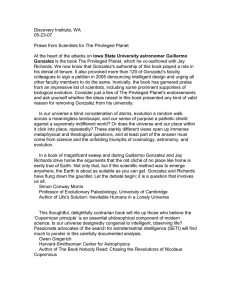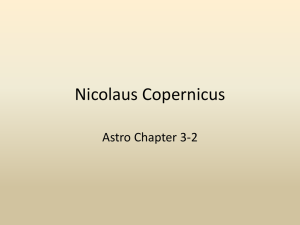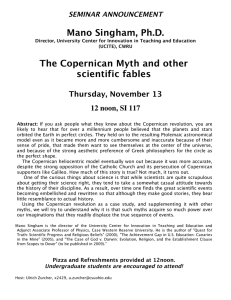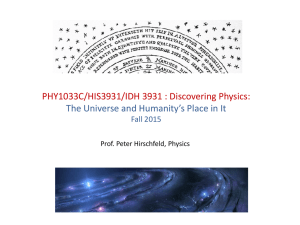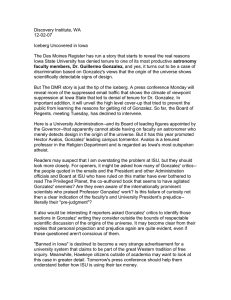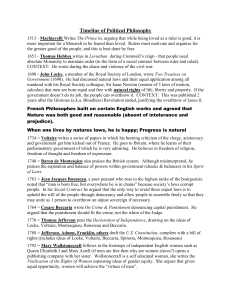World Peace Herald, DC 11-02-06
advertisement
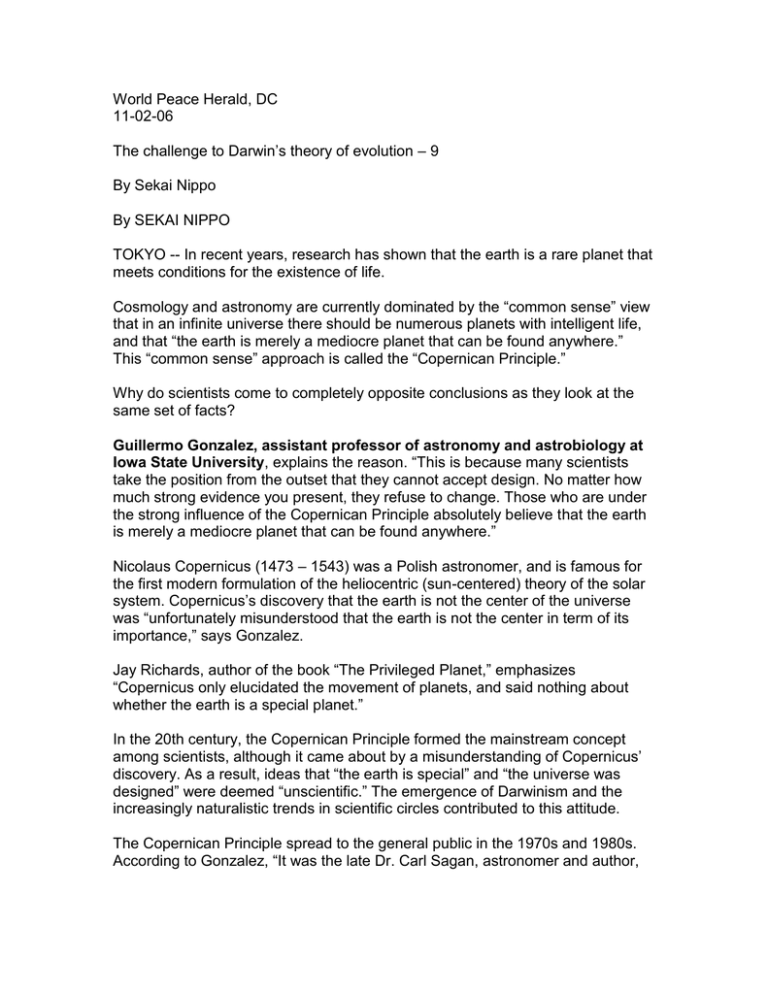
World Peace Herald, DC 11-02-06 The challenge to Darwin’s theory of evolution – 9 By Sekai Nippo By SEKAI NIPPO TOKYO -- In recent years, research has shown that the earth is a rare planet that meets conditions for the existence of life. Cosmology and astronomy are currently dominated by the “common sense” view that in an infinite universe there should be numerous planets with intelligent life, and that “the earth is merely a mediocre planet that can be found anywhere.” This “common sense” approach is called the “Copernican Principle.” Why do scientists come to completely opposite conclusions as they look at the same set of facts? Guillermo Gonzalez, assistant professor of astronomy and astrobiology at Iowa State University, explains the reason. “This is because many scientists take the position from the outset that they cannot accept design. No matter how much strong evidence you present, they refuse to change. Those who are under the strong influence of the Copernican Principle absolutely believe that the earth is merely a mediocre planet that can be found anywhere.” Nicolaus Copernicus (1473 – 1543) was a Polish astronomer, and is famous for the first modern formulation of the heliocentric (sun-centered) theory of the solar system. Copernicus’s discovery that the earth is not the center of the universe was “unfortunately misunderstood that the earth is not the center in term of its importance,” says Gonzalez. Jay Richards, author of the book “The Privileged Planet,” emphasizes “Copernicus only elucidated the movement of planets, and said nothing about whether the earth is a special planet.” In the 20th century, the Copernican Principle formed the mainstream concept among scientists, although it came about by a misunderstanding of Copernicus’ discovery. As a result, ideas that “the earth is special” and “the universe was designed” were deemed “unscientific.” The emergence of Darwinism and the increasingly naturalistic trends in scientific circles contributed to this attitude. The Copernican Principle spread to the general public in the 1970s and 1980s. According to Gonzalez, “It was the late Dr. Carl Sagan, astronomer and author, who popularized the misguided interpretation of the Copernican Principle. He strongly advocated the idea that the earth is something trivial.” In a photograph taken from the unmanned space vehicle Voyager, traveling at the edge of the solar system in 1990, the image of the earth was captured as a small point of light in the vast darkness. Looking at that image, Sagan stated in his book “Pale Blue Dot”: “Because of the reflection of sunlight… the Earth seems to be sitting in a beam of light, as if there were some special significance to this small world. But it’s just an accident of geometry and optics… Our posturing, our imagined self-importance, the delusion that we have some privileged position in the Universe, are challenged by this point of pale light.” Based on this point of view, the Search for Extra Terrestrial Intelligence (SETI) was initiated in the United States in 1960s, and Sagan himself was involved in its activities. Sagan believed that there are a few million planetary civilizations on an equal level with human civilization in the vast universe. However, not one piece of evidence to prove such a belief has been discovered. In an interview with the Japanese television network NHK in 2001, Gonzalez pointed out that “humankind is probably the only intelligent life form in the galaxy.” However NHK did not broadcast the interview. Presumably his statement might have been considered unfit for the theme of a feature program based on the Copernican Principle and entitled “Is the universe full of life?” “I was surprised to learn that they had decided not to use the interview. It seemed to me that they were satisfied with the footage they had obtained. It does make sense (considering) that the film is predicated on the Copernican Principle. This idea still permeates science writing and culture,” says Gonzalez. In response to an inquiry from Sekai Nippo, NHK responded by saying, that “[in the process of creating the program] we interviewed many scientists. Dr. Guillermo Gonzalez was one of them. Although the theory of Dr. Gonzalez and others was valuable academically, it could not be accommodated in the program’s limited 49 minutes. Unfortunately, we omitted the interview.” Mainstream modern science is predicated on the premise that “the earth and humans originated in the universe without purpose or meaning.” On the other hand, the latest research presents overwhelming evidence that indicates the involvement of an intelligent designer. Are humans and the earth mediocre beings or special beings in the universe? This question appears certain to become one of the major themes of the 21st century. At the end of his interview, Gonzalez said, “It is my sincere wish that the new generation of scientists have a more flexible and open mind toward alternate possibilities in science.”
